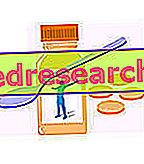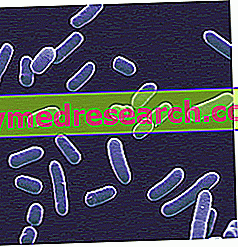Definition
The tremors are involuntary, oscillating and rhythmic movements of one or more parts of the body with respect to an axis of equilibrium. Often pathological in nature, tremors are caused by the alternate contraction of opposing muscle groups (antagonists) between them.
In the framing of tremors it is important to consider the onset mode, the type and distribution, the frequency of oscillation (rapid or slow), the amplitude of movement (fine or coarse tremors), the coexistence of systemic diseases or specific pathologies neurological, taking particular drugs or other substances (alcohol, drugs, caffeine and nerves).
Depending on the moment it appears, the tremor can be at rest or in action.
- Resting tremor is maximum in the state of total rest and is attenuated or ceased with a voluntary movement or the maintenance of a posture. It is rhythmic, low frequency and regular. Resting tremor is typical of Parkinson's disease, of which it is often the debut symptom.
- The tremor of action, however, it is the result of a voluntary muscle contraction. It can appear during a voluntary movement (kinetic tremor) or due to the sustained and continuous contraction of a body segment (eg a limb) in maintaining a fixed position (postural tremor). Postural tremor then disappears when one has complete muscle relaxation.
The tremor can also be distinguished in physiological or pathological signs.
- Physiological tremor is a spontaneous phenomenon and occurs in a sustained position (for example: when a fixed posture is maintained). It is normally present in most healthy people, but is within a normal range and due to its very small size is difficult to observe with the naked eye. The physiological tremor, however, is amplified following stress, fatigue, anxiety, fever, cold, metabolic disorders (eg alcohol withdrawal and thyrotoxicosis) or due to the use of caffeine and drugs (phosphodiesterase inhibitors, adrenergic agonists or corticosteroids ). Physiological tremor is generally attenuated by rest.
- Pathological tremor, on the other hand, is a phenomenon that can recognize many causes, appear at any time and affect various parts of the body. The most frequent causes of tremor include essential tremor, Parkinson's disease, stroke and multiple sclerosis. Pathological tremors are considered movement disorders and are generally regular and alternating or oscillatory. The neurological dysfunction or lesions responsible for the tremor can result from trauma, ischemia, tumors, infections, metabolic insults, poisonings or demyelinating pathologies.

The tremors hit the hands very frequently
Possible Causes * of Tremors
- Alcoholism
- Anxiety
- Panic attack
- Binge drinking
- Cysticercosis
- Diabetes
- Cerebral hemorrhage
- Japanese encephalitis
- Wernicke's encephalopathy
- Lassa fever
- Pheochromocytoma
- Stroke
- West Nile virus infection
- Insulinoma
- Carbon monoxide intoxication
- Hyperparathyroidism
- Hyperthyroidism
- Cerebral ischemia
- Creutzfeldt-Jakob disease
- Huntington's disease
- Wilson disease
- Graves' disease - Basedow
- Parkinson's disease
- Infant Cerebral Palsy
- Spastic paraparesis
- Multiple sclerosis
- Feto-alcohol syndrome
- Serotonin syndrome
- African trypanosomiasis



